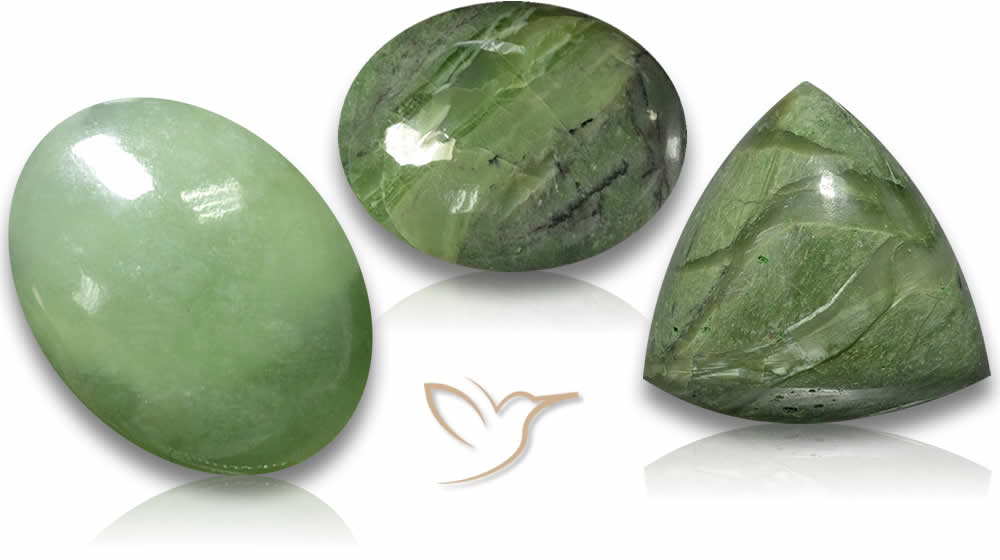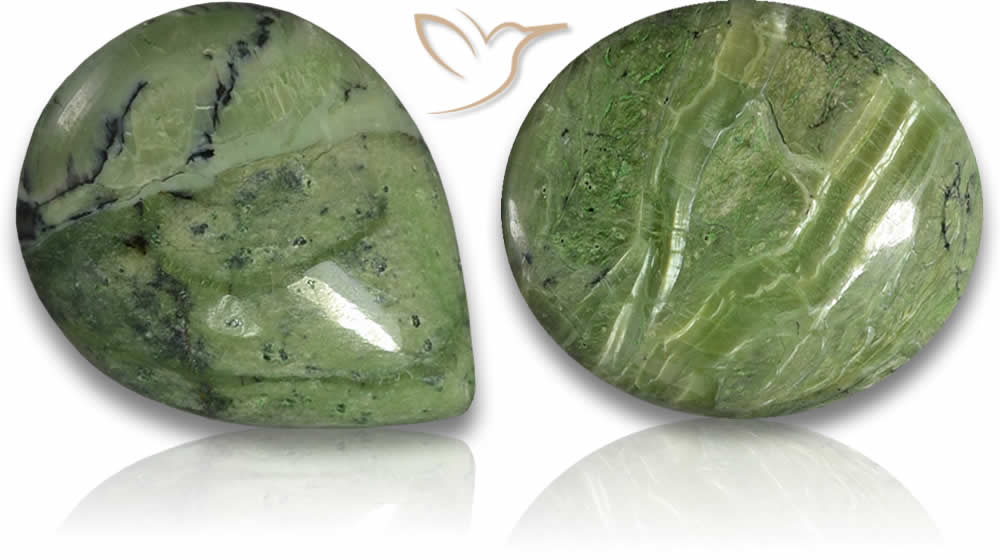Explore the Beauty of Green Serpentine Gemstones

As professional gemstone enthusiasts, we are always eager to discover unique stones that capture our imagination. Serpentine Gemstones are one such treasure that fascinates us with their subtle elegance and enchanting hues.
Green serpentine is one of the most sought-after color, valued for its rich color and striking clarity. But there's more to these gemstones than just their beauty. Their origins, history, and usage have also contributed to their enduring appeal.
Join us on a breathtaking journey to explore the fascinating mysteries of Green Serpentine Gemstones and discover why they are such a prized possession.
Feel free to explore our current stock of natural Serpentine gemstones for sale right here.
Key Takeaways:
- Serpentine Gemstones are known for their subtle beauty and striking hues.
- Green serpentine is popular and valued for its rich color and clarity.
- The history and origins of serpentine gemstones make them an interesting and unique gemstone.
- Caring for serpentine gemstones is essential for preserving their beauty and longevity.
Unraveling the Enchanting Hues of Serpentine Gemstones
We can't talk about Serpentine gemstones without highlighting the mesmerizing green shades for which these stones are famous. These unique green hues of serpentine come in a variety of colors like light green, olive green, dark green and yellow-green, making it a favorite among jewelers and jewelry lovers alike.
Cut and clarity play a vital role in enhancing the beauty of green serpentine stones. The finest serpentine is cut as cabochons for gemstones, or carved into decorative objects. Serpentine is not known to be treated or enhanced in any way.
Discovering the Origins and History of Serpentine Gemstones
The origins of serpentine gemstones can be traced back to several regions across the world, including Europe, Asia, South America, and North America. The name 'serpentine' was originally coined by Pliny the Elder in the first century, as the stone was believed to have healing properties against snake bites. Today, the stone is admired for its striking colors and patterns.
Green serpentine, which is the focus of our article, is believed to have originated from Greece, where it was known as 'ophichalkos' or 'snake stone.' It was used by the Greeks in decorations, jewelry, and even for culinary purposes. They believed that it could protect against evil spirits and ward off diseases.
Aside from its use in ancient Greece, serpentine has played a significant role in various cultures throughout history. In China, the stone was associated with longevity and immortality. The ancient Egyptians used serpentine as a symbol of inner strength and healing, while the Aztecs in Mesoamerica used it in their decorative arts, as well as for medicinal purposes.
Today, serpentine remains a highly valued gemstone. Its rich history and cultural significance make it a highly sought-after gemstone in the modern world.

Green Serpentine Jewelry Design Ideas and Care Tips
Green serpentine gemstones make stunning pieces of jewelry. Whether you prefer dainty pieces or bold statement accessories, there's a green serpentine jewelry design that will suit your unique style. Our creative design ideas will inspire you to incorporate these beautiful gemstones into your jewelry collection.
Earrings
Add a touch of glamour to your look with green serpentine earrings. From classic studs to dangling statement pieces, these earrings will add a pop of color to your outfit.
Necklaces
A green serpentine necklace is a show-stopping accessory that will elevate any outfit. Consider necklace designs with delicate chain necklaces, as well as more elaborate designs featuring multiple gemstones. For a unique twist, try a necklace with a mix of green serpentine and other colored gemstones.
Bracelets
A green serpentine bracelet is an eye-catching accessory that can be worn alone or layered with other bracelets. A popular design is the classic tennis bracelets with sparkling green serpentine gemstones, as well as more modern designs with chunky gemstones and a matte finish.
Rings
A green serpentine ring is a gorgeous addition to any jewelry collection. Ring designs including delicate stacking rings with small green serpentine gemstones, as well as bold statement rings with large gemstones in unique shapes.
Care and Cleaning
To keep your green serpentine jewelry looking its best, it's important to take proper care of it. Avoid exposing your jewelry to harsh chemicals, high temperatures, or extreme humidity. To clean your green serpentine jewelry, gently wipe it with a soft cloth. You can use a mild soap solution, but avoid harsh chemicals that can damage the gemstone.
In conclusion, green serpentine gemstones are a stunning choice for jewelry designs. With proper care and cleaning, your green serpentine jewelry will last for years to come. We hope our collection of design ideas inspires you to incorporate these beautiful gemstones into your jewelry collection.
Conclusion
As we conclude our exploration into serpentine gemstones, let's take a moment to discuss their price and value. While the price of green serpentine varies based on factors such as color, cut and clarity, it is generally considered an affordable gemstone.
Finally, it's worth mentioning some of the popular trade names associated with serpentine gemstones, such as New Jade, Williamsite, and Atlantis Stone. These trade names reflect the unique and captivating nature of serpentine gemstones.
Overall, serpentine gemstones are a stunning and affordable choice for jewelry designers and collectors alike. Whether you choose green serpentine or another variety, these gemstones are sure to capture your imagination with their natural beauty and unique allure.
FAQ
What are serpentine gemstones?
Serpentine gemstones are a type of mineral composed of hydrous magnesium silicate. They are known for their beautiful green hues and unique patterns. Serpentine gemstones have been used in jewelry and decorative pieces for centuries.
Are all serpentine gemstones green?
No, not all serpentine gemstones are green. While green is the most common color, serpentine gemstones can also occur in shades of yellow, brown, and black.
How is the clarity and cut of green serpentine treated?
Green serpentine gemstones are typically cut and polished to enhance their clarity and beauty. Serpentine is not known to be treated or enhanced in any way.
Where does green serpentine come from?
Green serpentine is found in various locations around the world, including the United States, China, Zimbabwe, and New Zealand. Each region produces unique variations of green serpentine with its own characteristics.
What is the history of serpentine gemstones?
Serpentine gemstones have a rich historical significance. They have been used in jewelry and decorative arts since ancient times. In ancient Egypt, serpentine was highly valued and used in carvings and amulets. It was believed to have protective and healing properties.
What are some jewelry design ideas for green serpentine?
Green serpentine can be used in a variety of jewelry designs. It looks stunning as earrings, pendants, bracelets, and rings. Its natural green color adds a touch of elegance and versatility to any jewelry piece.
How do I care for and clean my green serpentine jewelry?
To care for your green serpentine jewelry, gently wipe it with a soft cloth to remove any dirt or oil. Avoid using harsh chemicals or ultrasonic cleaners, as they can damage the stone. Store your green serpentine jewelry separately from other jewelry pieces to prevent scratching.
What is the price and value of green serpentine?
The price of green serpentine gemstones can vary depending on factors such as color, size, and quality. Generally, green serpentine is considered an affordable gemstone. Its value is determined by its appearance, rarity, and market demand.
What are some other names for serpentine gemstones?
Some of the popular trade names associated with serpentine gemstones, such as New Jade, Williamsite, and Atlantis Stone.

